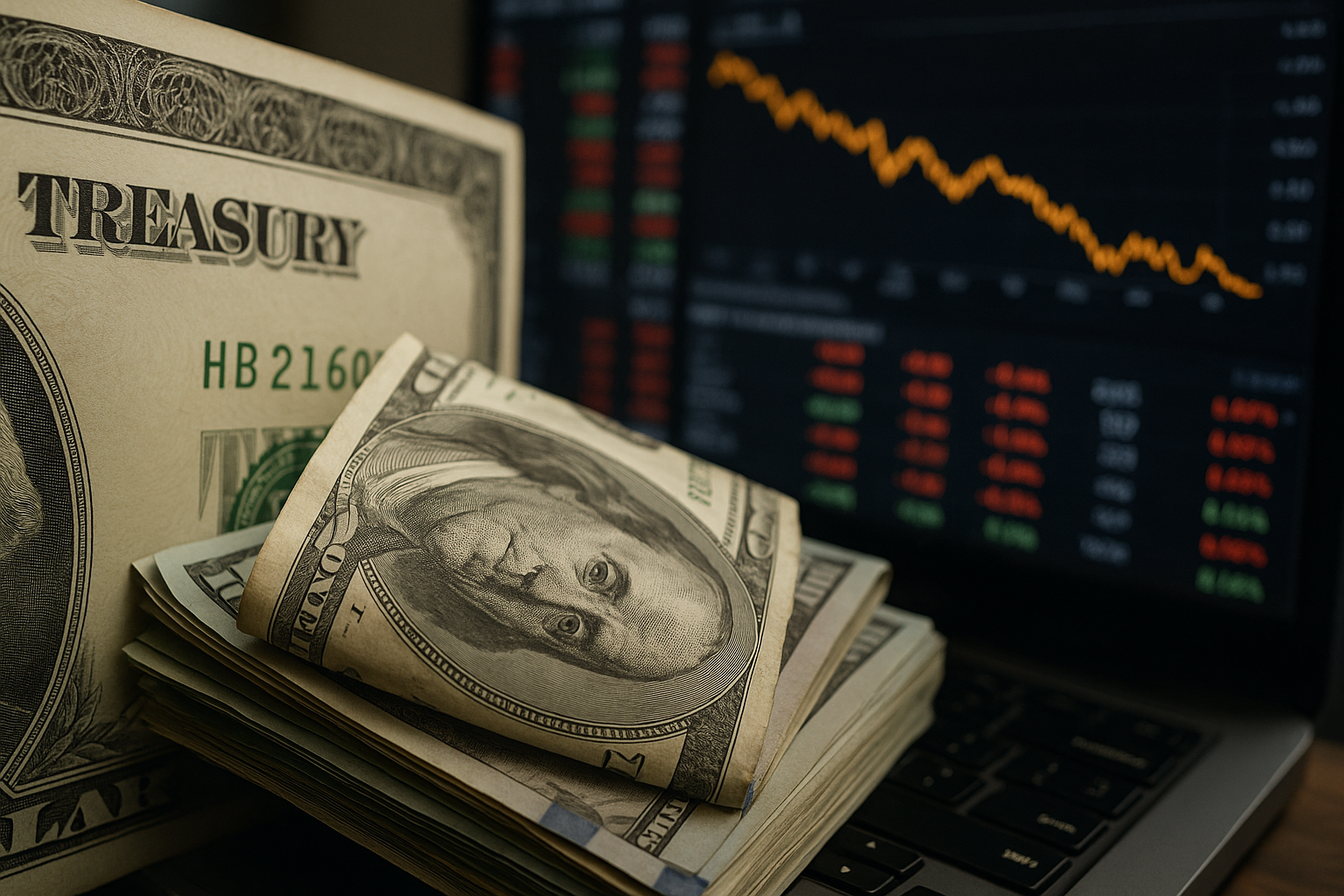U.S. Treasury yields rose sharply on Tuesday, September 2, 2025, as long-dated European bonds sold off and a busy slate of corporate debt offerings pressured markets. The 30-year Treasury yield approached the 5% mark, reflecting investor concern over the trajectory of U.S. monetary policy and broader economic conditions.
The move came as traders returned from the holiday weekend, digesting weak ISM manufacturing data that signaled softness in employment, overall activity, and prices paid, although new orders showed some recovery. Benchmark Treasury yields climbed roughly three basis points across the curve, with the 10-year and 30-year notes leading the advance. Block trades, including a large buyer of 10,000 10-year note contracts, helped stabilize yields near their session highs.
Yields in the United Kingdom and Europe also surged, contributing to pressure on U.S. debt markets. Analysts suggest that global long-term rates are recalibrating in response to rising inflation expectations abroad and uncertainties in policy direction. John Briggs, head of U.S. rates strategy at Natixis North America, noted that the 30-year approaching 5% is not a “magical number” but reflects genuine concerns about the path of long-dated bonds globally.
Investors are pricing in expectations for a potential Federal Reserve interest rate cut this month, though bets remain modest. Currently, futures indicate roughly 22 basis points of a quarter-point reduction at September’s meeting, with slightly more than two total quarter-point cuts priced by year-end. Analysts caution that the magnitude of easing will depend heavily on the August jobs report due Friday, which will offer a key read on the labor market and economic momentum.
The labor market is central to the Fed’s policy outlook. Governor Christopher Waller has expressed support for a 25-basis-point rate cut at the September meeting, but signaled that more aggressive easing could be warranted if employment data show pronounced weakness and inflation remains contained. Economists surveyed by Bloomberg anticipate August payrolls rose by only 75,000, with the unemployment rate inching up to 4.3%.
Kathy Jones, chief fixed income strategist at Charles Schwab, emphasized that Treasury yields are pricing in uncertainty about the Fed’s next moves. She highlighted the market’s sensitivity to coherent policy signals and the potential for the jobs report to influence the term premium, particularly in longer maturities.
The spike in yields has important implications for investors and corporations alike. Higher long-term rates increase borrowing costs for issuers and can weigh on equity valuations, particularly for growth and rate-sensitive sectors. Conversely, rate volatility may offer opportunities for fixed-income investors to adjust portfolios in anticipation of potential Fed easing.
Traders also note that September is historically a weak month for long-dated interest-rate exposure, which could compound volatility as markets digest both domestic and international developments. Any deviation from expectations in the jobs report or inflation metrics could sharply alter Treasury pricing and market sentiment.
As the week progresses, all eyes will be on Friday’s employment figures, which are expected to set the tone for the Fed’s September policy decision. Until then, Treasury markets remain on edge, balancing global pressures, domestic economic signals, and uncertainty around the central bank’s path forward.


